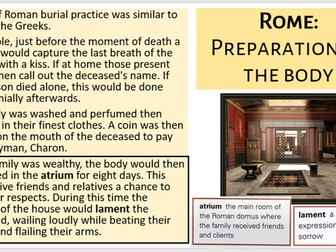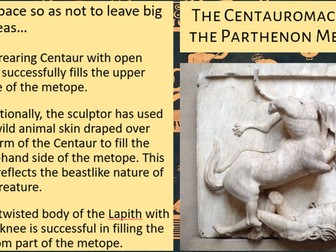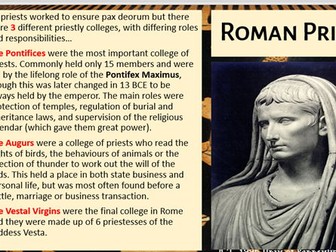Myth and Religion - Unit 8, Lesson 1: Intro to Unit (Homeric Hymn to Demeter)
<p>KS4 lesson for Unit 8: Intro to Unit (Homeric Hymn to Demeter), in Component 1: Myth and Religion, of the OCR Classical Civilisation GCSE. The lesson objective is an introduction to the Journeying to the Underworld unit, focusing on the Homeric Hymn to Demeter, and the significance this held for the ancient Greeks.</p>
<p>Accessible for all ability groups and the resources are easily differentiated for more and less academically able students.</p>
<p>This lesson includes…</p>
<ul>
<li>A starter recap quiz on Unit 6: Myths and Symbols of Power, where students are encouraged to use knowledge organisers to help them answer.</li>
<li>ISM Visual source starter, recapping Unit 1: The Gods.</li>
<li>An introduction to the unit and the context of the Homeric Hymns.</li>
<li>In-depth study of the Homeric Hymn to Demeter; focusing on themes, characters and epithets for the purposes of annotating the prescribed literary source booklet.</li>
<li>Comprehension questions, based on reading and annotations.</li>
<li>Summary of the myth, using visual sources and votives to support learning.</li>
<li>Study of the Eleusinian Mysteries and the significance they held for the ancient Greeks.</li>
<li>Study of the nature of the gods, using the annotated myth, a video and a table resource to support learning.</li>
<li>[6] mark practice exam question with success criteria and a modelled start. Peer-marking instructions/criteria also included.</li>
<li>Study of alternative interpretations of the significance of this myth.</li>
<li>Visual source study of a funeral frieze, leading to further exploration of the presentation of this myth in ancient Greek art.</li>
</ul>
<p>**Please note: **The OCR prescribed literary sources booklet is required to access this lesson plan. This is available to download for free from the OCR website.</p>




















